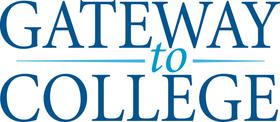How Academic Advising Impacts Student Success in Community Colleges
Introduction
In the community college environment, where open access meets diverse learner needs, the role of academic advising has moved from optional support to strategic imperative. In 2025, as colleges face mounting pressures for retention, completion, and equity, the function of academic advising stands out as a key lever for student success. This article explores how structured academic advising influences outcomes at two-year institutions, what effective models look like, and how leaders can implement advising practices that truly make a difference.
What is Academic Advising in the Community College Context?
Academic advising is more than course scheduling; it involves guiding students through program selection, career goals, academic planning, and navigating institutional systems. One prominent framework emphasises that effective advising is: sustained throughout a student’s tenure, strategic in resource deployment, integrated with other student supports, proactive in outreach, and personalised to student interests and needs. Community College Research Center
At community colleges, advising must account for diverse student populations—working adults, first-generation students, part-time learners, and English-language learners. These complexities demand advice that goes beyond “here’s your schedule” to “how will you make this plan work for you?”
Why Academic Advising Matters for Student Success
Research over the last decade has increasingly shown a positive relationship between academic advising and key success metrics: persistence, credit accumulation, registration for future terms, and completion. For example, a 2024 study of a large multi-campus community college found that students who completed two or more formal advising appointments had higher persistence rates, attempted more credits in the next term, and earned more credits in the current term compared with students who had none.
Similarly, the Community College Research Center (CCRC) identifies advising as a core component of support models that help address educational inequities—especially when advisors specialise in particular academic areas, coordinate with other services, and intervene proactively.
In sum, academic advising matters because:
It helps students define and commit to a program of study.
It assists with early navigation of institutional systems and course selection, reducing “shopping around.”
It connects students to resources—academic support, tutoring, financial aid referrals—that they may not discover on their own.
It fosters a sense of belonging, which is especially important for non-traditional or under-represented students.
Key Impact Areas: What Advising Influences
| Success Metric | Advising Influence |
|---|---|
| Persistence (term-to-term) | Regular check-ins keep students engaged and aware of their plan. |
| Credit Accumulation | Advisors help plan a realistic course load and avoid delays; more credits mean more momentum. |
| Timely Registration | Students who engage with advisors register earlier for next term, which correlates with better outcomes. |
| Completion and Transfer Success | Planning around degree or certificate pathways improves likelihood of finishing or transferring. |
By influencing these metrics, high-quality advising becomes a critical dimension of student success strategy in community colleges.
What Effective Academic Advising Looks Like in 2025
Based on current research and practice, effective advising in community colleges has several distinguishing features:
Assigned Advisor with Ownership
Advisors are assigned to students—not simply available on request—and carry responsibility for guiding them through the entire pathway from entry to completion or transfer.Program-Specific Expertise
Instead of generalists, advisors specialise in specific academic programs or student populations (e.g., adult learners, first-generation). This allows meaningful, contextualised conversations.Proactive Outreach
Rather than waiting for students to ask for help, advisors reach out—especially to students who are off-track, under-attending, or behind in credits.Integrated Support Network
Advising is embedded within a broader support ecosystem: tutoring, financial aid, career services, childcare/transport referrals. The advising function acts as the central node coordinating these supports.Data-Informed Monitoring
Advisors use dashboards or CRM tools to track students’ progress, flag risk signals (low GPA, missed registration), and schedule touchpoints accordingly. The 2024 study referenced earlier employed such systems to categorise students by advisor-contact frequency.Meaningful Conversations Beyond Course Selection
The advising conversation includes goal-setting (academic, career, personal), discussing obstacles, building self-efficacy, and linking to campus/community resources. A qualitative study found students strongly valued advisors who “humanised” the process and engaged on the student’s terms. researchdiscovery.drexel.edu
Challenges and Considerations for Community Colleges
While the potential of academic advising is clear, community colleges face distinct obstacles:
High Advisor Caseloads: Many institutions assign 300+ students per advisor, limiting intended depth of interaction. ERIC
Fragmented Systems: Advising units often exist separately from other student services, reducing coordination and holistic engagement.
Resource Constraints: Budget limitations can restrict hiring professional advisors, investing in training, or deploying advising technologies.
Student Diversity: Students may work full time, have familial responsibilities, or attend part time—requiring flexibility in advising formats (evening, online, hybrid).
Limited Empirical Evidence: While positive associations are strong, the direct causal pathways between advising and success metrics are still under study. SciSpace
Practical Strategies for Implementation
For community colleges looking to strengthen academic advising in 2025, consider the following actionable strategies:
Segment Students by Risk and Need: Use data (e.g., prior GPA, part-time status, demographics) to categorise students who may need more intensive advising, then allocate resources accordingly.
Schedule Early Touchpoints: Within the first 2–3 weeks of the semester, schedule mandatory or strongly encouraged advising appointments for new students.
Use Technology Wisely: Implement CRM systems for documentation, automated alerts for missed advises, and early-alert triggers for students at risk of falling behind.
Train Advisors Professionally: Ensure advisors have training in developmental advising, goal-setting, culturally responsive practice, and resource referral.
Foster Cross-Departmental Collaboration: Create workflows linking advising, tutoring, financial aid, and career services so students receive coordinated support rather than fragmented outreach.
Monitor Metrics and Refine Practice: Track advising frequency, registration timing, credit accumulation, retention rates; use these as feedback to refine advising models and resource deployment.
Case Example: A Large Community College Study (2024)
In the 2024 quantitative study of more than 34,000 students across a multi-campus system, researchers found that students with multiple advising appointments (vs. none) achieved:
Higher persistence from fall to spring.
Greater number of completed credits in the fall term.
More attempted credits in the subsequent spring.
This study underscores that advising frequency matters—and that regular contact correlates strongly with positive outcomes. For community colleges seeking measurable impact, increasing advising touchpoints is a viable strategy.
Equity Implications and the 2025 Context
As colleges strive to eliminate equity gaps—particularly for first-generation students, students of color, and adult learners—academic advising offers an essential point of intervention. Research from the CCRC emphasises that advising programmes must sustain the relationship across the student journey, not just at entry.
In 2025, with changing demographics and growing demand for workforce alignment, colleges that incorporate culturally responsive advising practices and tailor supports to non-traditional schedules/needs are better positioned to advance equity and completion.
Looking Ahead: Trends That Will Shape Advising
Predictive Analytics and Advising: More community colleges will adopt predictive tools to identify students at risk of attrition and automate advisor outreach.
Hybrid/Virtual Advising Models: With learners increasingly attending online or part time, advising will evolve to include virtual appointments, chatbots, and asynchronous communication, while retaining human relationship-building.
Program-Embedded Advising: Moving toward models where advisors are integrated within academic departments or career pathways rather than stand-alone offices.
Scale of Proactive Advising: Rather than passive “walk-in” advising, colleges will shift toward scheduled check-ins, milestones, and guided pathways coordination.
Holistic Student Support: Advisors will increasingly serve as connectors to non-academic supports (childcare, food insecurity, mental health), reflecting the whole-student reality of many community college learners.
Conclusion
In the community college arena, where access and mission align to serve the broadest range of students, academic advising is not an optional add-on—it is essential. The evidence for 2025 shows that when advising is structured, proactive, program-specific, and integrated with broader supports, it correlates with meaningful gains in persistence, credit-completion, and timely registration.
For institution leaders, investing in quality advising means more than staffing and technology—it means establishing an advising culture that meets students where they are, aligns with their goals, and sustains engagement through to completion or transfer. For students and families navigating the community college journey, engaging early and regularly with an advisor can make the difference between drifting and graduating.
With the right design and commitment, academic advising becomes a strategic engine of student success for community colleges today.














